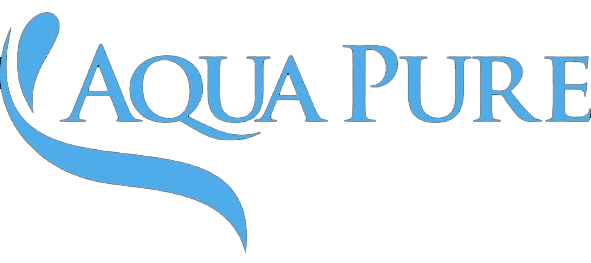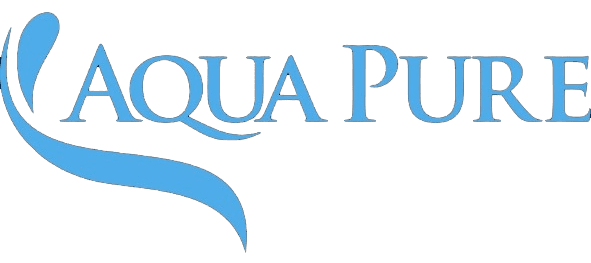When your faucet runs, it’s easy to take for granted that the clear water is safe. But for folks in Houston (or suburbs like Katy, Cypress, Richmond, Sugar Land, etc.), there’s a lot more going on behind the scenes than meets the eye. In this guide, I’ll walk you through what’s actually in your water, how it affects your health and home, how to spot problems, and what you can realistically do to get better water quality. (Yes you can do better than just hoping “it’s fine.”) I’ll also show how Aquapure’s local solutions can help—without turning this into an ad.
What Houston & Katy’s Water Looks Like Under the Microscope
How Our Water Gets to You: Sources & Treatment
Houston’s water is a mix of surface sources (rivers, reservoirs) and groundwater (wells). The city’s 2024 water quality report says they draw from three major surface-water purification plants plus 39 groundwater plants. Some suburban systems (in the Houston metro area) also rely more heavily on wells. The water is treated with standard steps: coagulation, filtration, disinfection, pH adjustment, and so on. The “consumer confidence” reports (aka CCRs) show that Houston mostly meets federal standards, but that doesn’t mean it’s perfect. There are a few trouble spots and things that are not regulated (or barely regulated).
Key Contaminants & Issues in Houston-Area Tap Water
Here are the substances and “problems” that tend to show up in your water around Houston / Katy even when everything is “legal.” Some are more serious than others, but they all matter in practice.
| Contaminant / Issue | Description & Typical Levels | Why It Matters (Health, Home, Taste) |
| Hard water minerals (calcium, magnesium) | Houston’s “Main” system has measured levels up to ~236 ppm (i.e. “very hard”) | Scale buildup in pipes, water heaters, appliances; soap scum; decreased efficiency; dry skin/hair |
| Chlorine / chloramine & disinfection byproducts | Chlorine (or chloramine) is used to kill bacteria. Byproducts like trihalomethanes (TTHMs) can form. EWG data show chloroform ~13.7 ppb (vs. their guideline 0.4 ppb)) | Taste/odor, possible long-term cancer risk from byproducts, irritation to sensitive users |
| Arsenic (and other metals) | The Houston system sometimes has trace arsenic below regulatory action levels but still detectable. | Long-term exposure linked to skin, lung, bladder cancers; other systemic effects |
| Chromium-6 (hexavalent chromium) | Elevated levels (on a trace scale) have been detected in Houston water. | Known carcinogen in many contexts; chronic exposure risk |
| Lead (from plumbing, old pipes, fixtures) | The city CCRs often note “lead may be present from in-home plumbing.” | Especially bad for infants, children, pregnant women neurologic and developmental harm |
| PFAS (“forever chemicals”) | Some local reports and water-consulting firms flag PFAS emerging as a concern. | Hormonal disruption, immune impact, cancer risk over time |
| Sediment, turbidity, iron, manganese, other metals | Surface-water input, runoff, older pipes can contribute fine particles or discoloration | Can clog filters, stain fixtures or laundry, reduce clarity/taste |
| Microbes / bacteria / occasional E. coli risk | While treatment aims to prevent this, there have been local boil-water advisories from isolated plant failures or well contamination. | Acute gastrointestinal illness, especially for vulnerable folks |
| Other organics / pesticides / volatile chemicals | Some traces of herbicides, petroleum-byproducts, industrial compounds have been detected in local waterways or invoked in regional studies. | Variable health concerns depending on chemical often long-term exposure is the issue |
In short: Houston’s tap water is generally safe by regulation, but “safe by regulation” doesn’t equal “perfect” or “ideal.” Many of the issues above are secondary meaning they may not violate current laws, but they do affect your daily life, the lifespan of your appliances, and long-term health risks.
How These Issues Show Up in Your Home & Body
Knowing what’s in the water is one thing. But what you see (or feel) in your daily life is often how you realize a problem exists.
Signs in Your Plumbing & Appliances
- Scale buildup / white crusts on faucet aerators, showerheads, inside kettles or coffee makers
- Reduced water flow or clogged showerheads
- Frequent maintenance or early failure of water heaters, dishwashers, washing machines
- Spotting or dull glassware, white film on dishes
- Rust stains or discoloration, especially if iron or manganese are present
- Cloudy water, especially after heavy rain (turbidity)
Signs in Your Body, Skin & Taste
- Dry, itchy skin or hair that feels stiff or “coated” minerals leave a residue
- Soap scum, lather that doesn’t feel good
- Odd tastes or odors metallic, chlorine, chemical hints
- Staining on sinks, toilet bowls
- Upset stomach or digestive sensitivity (more likely if microbes or disinfection byproducts are involved)
Subtle / Long-Term Health Signals
Because many contaminants operate at trace levels, they don’t create immediate symptoms. The concern is chronic exposure e.g. cumulative exposure to arsenic, lead, fluoride, or PFAS over time. That’s why filtration and monitoring become smart even when nothing looks “off.”
How to Tell Your Water Might Need Treatment
You don’t have to guess—there are concrete tests and DIY checks you can do.
- Get a certified water test
- Many labs or local municipalities offer testing for hardness, metals (lead, arsenic), pH, total dissolved solids.
- You can ask for a “full suite test” including volatile organics, PFAS, disinfection byproducts.
- If you’re an Aquapure homeowner or considering their system, you can request a free or subsidized test; that gives you a baseline.
- Compare your water report to benchmarks
- Read your local CCR or consumer confidence report and see how your system compares to EPA regulated limits. Remember: just because it’s under the legal limit doesn’t mean no treatment is beneficial.
- DIY checks
- Use a hardness test strip (cheap, available at home improvement or pool stores).
- Boil a small amount of water if scale forms on the bottom/edges, that’s hardness in action.
- Let a glass of water sit: if particles settle or the water is cloudy, that’s turbidity/sediment.
- Taste or smell test! If you consistently smell chlorine, or have a weird metallic hint, that’s a flag.
- Look at your appliances: scale build, frequent clogging, reduced efficiency.
- Watch for changes or anomalies
- After heavy rains, flooding, or maintenance in the local water system, your water might temporarily degrade.
- If your neighbor’s water looks odd or you see municipal advisories (boil water notices), treat carefully.
Realistic Solutions for Houston / Katy Homeowners
Now, the good news: you don’t have to resign yourself to bad water. There are solutions tailored to the specific needs of Houston-area water. Below are common strategies (with pros/cons) and how something like Aquapure can help make them work for your home.
Water Softeners (Ion Exchange)
What they do: They trade out calcium and magnesium (hardness minerals) for sodium (or potassium) ions. The result: softer, scale-free water.
What they don’t: They don’t remove chlorine, lead, PFAS, microbes, etc.
When you need one: If your tests or daily life show signs of scale, hardness, or damage to appliances. In Katy and Houston, hardness is often above 180 ppm, sometimes reaching >200 ppm. Considerations:
- Regeneration requires salt or potassium.
- Discharge water is salty if you have drought or water-conservation priorities, it’s something to think about.
- May slightly increase sodium in water (which is minor for most people).
- Doesn’t address contaminants beyond hardness.
How Aquapure fits: You can have a custom water softener solution installed, backed by their certified technicians. They often offer free installation & support, financing with $0 down, and lifetime warranties. This way you get confidence without big up-front cost. (If you’re curious, see their water softener page:
Point-of-Entry / Whole-House Filtration
What they do: These systems treat all the water entering your home (for drinking, showers, laundry). They can combine multiple media (activated carbon, KDF, sediment filters, catalytic carbon, UV) to reduce chlorine, organic compounds, sediments, and some metals.
When you need one: If you care about chlorine taste/odor in every faucet, or want cleaner showers, or want to protect all appliances from chemical corrosion. Also useful if your water test shows moderate levels of contaminants (e.g. chloroform, disinfection byproducts, organic chemicals).
Considerations:
- You still might want a point-of-use (drinking water) system for final polishing.
- Filters need maintenance (replace cartridges).
- They can’t fully tackle heavy metals or PFAS at high levels (for that, you often go to reverse-osmosis or specialized media).
Aquapure integration: Aquapure offers custom whole-home filtration solutions suited to your water profile (e.g. layering in carbon and catalytic media). Their technicians help you choose the right media and maintain warranties. (See:
Reverse Osmosis (RO) / Drinking Water Stations
What they do: They force water through a semipermeable membrane to remove dissolved ions, heavy metals, and many organics. This is great for kitchen/drinking water.
Use cases: For folks who want the highest-quality drinking water and are particularly worried about arsenic, chromium, lead, PFAS, disinfection byproducts. Use it for a drinking faucet or under-sink unit.
Considerations:
- Produces “waste” or reject water (often 3–4 gallons wasted per 1 gallon purified, depending on system).
- Needs periodic membrane and filter replacement.
- Does not treat the water you shower in (unless you invest in whole-home RO, which is expensive).
- You may want to re-mineralize RO water (otherwise it can taste “flat”).
UV / Disinfection Add-Ons
If your system sees microbial concerns (rare under normal operation, more possible after storms or system failures), adding a UV chamber can kill bacteria/viruses without chemicals.
Hybrid / Tiered Systems
In many Houston-area homes, you may want a hybrid strategy:
- Whole-house softening or basic filtration (for scale, chlorine, sediment)
- Under-sink RO or specialized drinking system (for trace metals, PFAS, disinfection byproducts)
- Periodic testing / monitoring to catch shifts in water quality
Because water quality can vary over time (rain, maintenance, repairs), having a buffer system + a drinking-level system is smart.
How to Choose a Good System What to Watch For
To pick a system that really works (and doesn’t become a hassle), here are key things to pay attention to:
- Matched to your test don’t overpay for things you don’t need
- Proper sizing a system too small will be overwhelmed
- Certification look for NSF, WQA, etc.
- Warranty & local support someone who can service it nearby
- Ease of maintenance how often filters need replacement
- Financing / cost structure upfront cost vs long-term operating cost
- Transparency your vendor should show you expected contaminant reduction, not just vague claims
This is where a local company like Aquapure can shine because they’ll analyze your specific water and offer a custom solution (not a one-size-fits-all box). Their perks (free install, lifetime warranty, local technicians) reduce risk.
Sample Scenario: A Katy Home’s Journey
Let me walk through a hypothetical (but realistic) example of a homeowner in Katy discovering and solving her water problems:
Step 1 – The Clues:
- Her showerhead starts gagging with white buildup in 6 months
- Glasses always come out with spots
- Her water tastes “funny” occasionally
- She read that Houston’s hardness was often ~200+ ppm
Step 2 – The Test:
She orders a full water test (hardness, metals, disinfection byproducts, pH, etc.). The results: 210 ppm hardness, 0.008 mg/L arsenic, moderate trihalomethane (TTHM) level, chlorine present, trace PFAS, and safe microbial results.
Step 3 – System Planning:
- She installs a whole-house softener to handle scale (calcium & magnesium).
- At the kitchen sink she adds an RO + carbon polishing unit to catch arsenic, trace metals, and disinfection byproducts.
- She keeps the softener and RO maintained via annual service.
- Over time, her appliances last longer, washing is easier, and the water tastes clean.
Because it’s a blended, layered system, she doesn’t over-invest (e.g. whole-house RO would have been overkill and pricey).
Local Q&A: Your Houston / Katy Water Questions
Q: Is Katy (or Houston) tap water safe to drink?
A: Yes, it generally meets EPA and Texas regulatory standards and is considered “safe” in a compliance sense. But “safe” doesn’t mean “ideal.” You will often get advantages (taste, appliance longevity, lower exposure to trace contaminants) by filtering or softening.
Q: Do I need a water softener in Katy?
A: Very likely. Water hardness in this part of the metro is often in the “hard” to “very hard” range (180+ ppm). Many homes see scale, buildup, appliance wear, soap inefficiency. A good softener often pays for itself in savings on repairs, energy, and cleaning time.
Q: Will a softener help with arsenic, lead, PFAS, chlorine, etc.?
A: No softeners address hardness only. For chemical or metal contaminants, you’ll want filtration (carbon, catalytic media, RO, etc). The best approach is to layer systems so each does what it’s good at.
Q: How much will all this cost?
A: It depends on system size, your water profile, and whether you finance. For many Houston-area homes, a whole-house softener + drinking RO system might run a few thousand dollars installed. But with $0 down financing, free installation, and local support, you can often spread it out. The long-term benefits often outweigh the cost (less repairs, longer appliances, better water quality).
Q: Can I just use a pitcher filter / Brita / countertop filter?
A: It helps somewhat (especially for taste, basic chlorine, some metals), but it won’t protect your appliances or treat water at every faucet. It also generally can’t handle hardness or high levels of trace contaminants.
Q: When should I test again?
A: Annually is a good rhythm, or whenever you notice changes (taste, smell, cloudiness, plumbing issues). Also test after major maintenance or after heavy storms or system work in your area.
Q: How do I get started (without guessing)?
A: Request a professional water test and a tailored recommendation. A good local provider (like Aquapure) can walk you through it, show you what your water needs, and install with support and warranties without overselling.
Final Thoughts & Next Steps
Houston-area water (including Katy) is far from perfect but it’s also far from a hopeless mess. With a clear understanding of what’s in your water, some testing, and smart layering of treatment systems (softening, filtration, RO), you can almost always get substantially better water for your health, your home, and your daily quality of life.
If you’d like help getting started, you can request a free water test or personalized quote from Aquapure. Their certified technicians can come out, test your water, and design a system optimized for your unique needs with free installation, financing, and a lifetime warranty to back it up.
Your water should work for you not against you. Let’s make sure it does.



